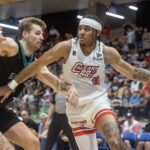The remarkable chemistry fueling the Blue Jays’ unexpected playoff push this season has become Toronto’s most compelling sports story. Walking through the clubhouse before yesterday’s pivotal series against Tampa Bay, I witnessed something that statistics can’t capture – genuine brotherhood.
“We’ve created something special here,” Vladimir Guerrero Jr. told me, his usual competitive intensity momentarily softened. “This isn’t just about baseball. We’re family.”
The Jays’ resurgence has surprised even veteran analysts after a disappointing 2023 campaign. Currently sitting five games over .500 and firmly in the wild card hunt, they’ve won 12 of their last 16 contests while showcasing a distinctively gritty style of play that’s energizing the Rogers Centre crowds.
Team captain Bo Bichette, sporting a fresh haircut that’s become his trademark, credits the turnaround to something intangible. “Last season taught us some hard lessons about taking things for granted. This year, we’re playing for each other every single inning.”
The statistics support this cultural shift. The Blue Jays lead the American League in sacrifice bunts, hit-and-runs executed, and defensive runs saved – all metrics that measure selfless team play rather than individual achievements.
Manager John Schneider has masterfully fostered this environment while navigating significant pressure. “The Toronto market demands excellence,” Schneider acknowledged during our pre-game conversation. “But these guys have stopped worrying about external noise. They’re focused on what matters – supporting each other.”
This team-first approach extends beyond the field. Players regularly gather for dinner on off days, with veteran acquisition Justin Turner hosting weekly team barbecues at his Toronto apartment. These gatherings have become legendary within the organization for strengthening bonds.
“You can’t fake chemistry,” explained Blue Jays mental performance coach Joe Sclafani. “What we’re seeing now is authentic connection translating into trust during high-pressure moments.”
The economic impact of this playoff push extends throughout the city. According to Tourism Toronto, playoff baseball typically generates approximately $3.5 million per home game for local businesses. Restaurant and bar owners around Rogers Centre report a 40% uptick in business on game days compared to last season.
“When the Jays are winning, the whole city feels it,” said Samantha Greenberg, owner of Rally Sports Bar on Blue Jays Way. “We’re seeing fans arriving hours earlier and staying later. There’s a belief in this team that’s infectious.”
The transformation hasn’t come without challenges. Early-season injuries threatened to derail momentum, while critical voices questioned the front office’s relatively quiet offseason. Yet adversity has seemingly strengthened resolve within the clubhouse.
Sports psychologist Dr. Caroline Wong from the University of Toronto isn’t surprised by this phenomenon. “Shared adversity often creates stronger bonds than shared success,” she explained. “This team has developed resilience together, which is more sustainable than talent alone.”
Perhaps most remarkable is how the Blue Jays have reconnected with long-suffering fans. Rogers Centre attendance has increased 12% year-over-year, with merchandise sales showing similar growth according to team officials.
The playoff push has particularly resonated with younger fans. The team’s social media engagement metrics have surged 35% this season, with content highlighting player personalities and behind-the-scenes moments proving especially popular.
“We feel the city behind us,” pitcher Alek Manoah told me after his complete game shutout last week. “Toronto deserves October baseball. That’s what drives us every day.”
As the regular season enters its final month, the mathematical projections give the Blue Jays a 61% chance of securing a wild card berth according to Baseball Prospectus. Yet inside the clubhouse, such calculations seem irrelevant.
“We’re not worried about probabilities,” Guerrero insisted. “We’re just playing for the guy next to us. That’s Blue Jays baseball.”
Walking through the concourse after our interviews, I noticed something else remarkable – fans wearing jerseys representing nearly every player on the roster, not just the stars. It seems this team’s identity has truly captured the city’s imagination.
Whether this remarkable chemistry carries the Blue Jays deep into October remains to be seen. But after spending time inside this transformed clubhouse, one thing is certain – Toronto has embraced a team that genuinely plays for each other. And in baseball, that might be the most powerful advantage of all.




